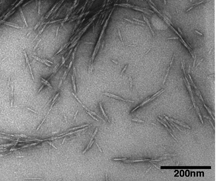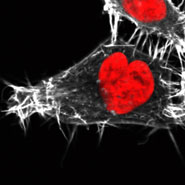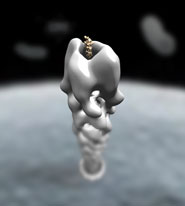One hopes that people will somehow be able to work things out when there’s a dispute although it seemed obvious at a fairly early stage with the GoldieBlox and Beastie Boys situation, as described in my Nov. 26, 2013 posting, that might not occur given the speed at which the situation escalated.
Thanks to a Dec.12, 2013 article on Slate by Kal Raustiala and Christopher Jon Sprigman, a couple of law professors, for an excellent and entertaining job of laying out some of the legal issues. Before discussing the article any further, here’s a précis of the situation: the GoldieBlox company repurposed (wrote a parody of) a Beastie Boys song to sell an engineering toy product to girls. The Beastie Boys (the remaining two) strenuously objected due to a policy of never allowing their songs to be used in advertising the GoldieBlox took a preliminary legal action and followed up by writing a public apology letter. At this point (dec. 17, 2013), the Beastie Boys have instituted their own legal action. Meanwhile, Raustiala and Sprigman point out that this seems to have bee a publicity strategy on GoldieBlox’s part.
What I had not fully appreciated, due to my ignorance of the Beastie Boys’ oeuvre, is the subversiveness of the GoldieBlox parody (from the Raustiala & Sprigman article),,
Set to a basic drumbeat and vibraphone loop, the Beasties rap in “Girls” about their love of … girls. Sort of. As with many Beasties songs, the lyrics contain a lot of maybe serious/maybe satirical misogyny:
Girls, to do the dishes
Girls, to clean up my room
Girls, to do the laundry
Girls, and in the bathroom
Girls, that’s all I really want is girls
Two at a time I want girls
With New Wave hairdos I want girls
I ought to whip out my girls, girls, girls, girls, girls!…
One of the best things about the GoldieBlox video is how it subverts the Beasties’ song to trash the very same gender stereotypes the Beasties celebrated. Here is GoldieBlox’s revision of the Beasties’ lyrics:
Girls, you think you know what we want
Girls, pink and pretty it’s girls
Just like the ‘50s it’s girlsYou like to buy us pink toys
And everything else is for boys
And you can always get us dolls
And we’ll grow up like them, falseIt’s time to change
We deserve to see a range
Cause all our toys look just the same
And we would like to use our brainsAnd we are all more than princess maids
Girls, to build a spaceship
Girls, to code a new app
To grow up knowing
That they can engineer thatGirls, that’s all we really need is girls
To bring us up to speed, it’s girls
Our opportunity is girls
Don’t underestimate girlsClever and cute. And you might think that the Beastie Boys, who—by the way—made a career out of repurposing others’ music for their own songs through sampling, would roll with the punches. But that’s not what happened. Because the Beastie Boys never wanted their music to be used in commercials.
Raustiala & Sprigman go on to excerpt text from the 3rd (now deceased) Beastie Boys’ will, as well as, the trademark and copyright claims by the remaining band members before closing with this,
So the Beastie Boys should lose their lawsuit—although once the lawyers take over, anything can happen. Maybe the improbable will occur in court and the Beasties will win. But thanks to the media blizzard around this silly fight, GoldieBlox simply can’t lose.
Here’s more about the Slate article authors (Note: Links have been removed),
Kal Raustiala is a law professor at UCLA. He is a co-author of The Knockoff Economy: How Imitation Sparks Innovation.
Christopher Jon Sprigman is a professor at the New York University School of Law and co-director of the NYU Engelberg Center on Innovation Law and Policy. He is a co-author of The Knockoff Economy: How Imitation Sparks Innovation.
Clearly, these lawyers are not maximalists where intellectual property is concerned, which coincides with my own bias.
One final thought, did anyone else notice that the offbeat resemblance between Goldilocks and three bears and GoldieBlox and the Beastie Boys, a musical trio?
ETA May 12, 2014: Mike Masnick has written a May 12, 2014 posting on Techdirt titled, Goldieblox Agreed To Pay Charity $1 Million For Using Beastie Boys’ Girls. Clearly, he’s not thrilled with the outcome.



![[downloaded from http://www.nano-initiative-munich.de/index.php?eID=tx_cms_showpic&file=uploads%2Fpics%2FBasiccover_6_Zeilen_02.jpg&md5=aec790fc11262dc94b41a440fa6788baeacfac97¶meters[0]=YTo0OntzOjU6IndpZHRoIjtzOjQ6IjUwMG0iO3M6NjoiaGVpZ2h0IjtzOjM6IjUw¶meters[1]=MCI7czo3OiJib2R5VGFnIjtzOjI0OiI8Ym9keSBiZ0NvbG9yPSIjZmZmZmZmIj4i¶meters[2]=O3M6NDoid3JhcCI7czozNzoiPGEgaHJlZj0iamF2YXNjcmlwdDpjbG9zZSgpOyI%2B¶meters[3]=IHwgPC9hPiI7fQ%3D%3D] Courtesy NIM](http://www.frogheart.ca/wp-content/uploads/2013/12/NanoPlanetSatellite-300x229.jpg)